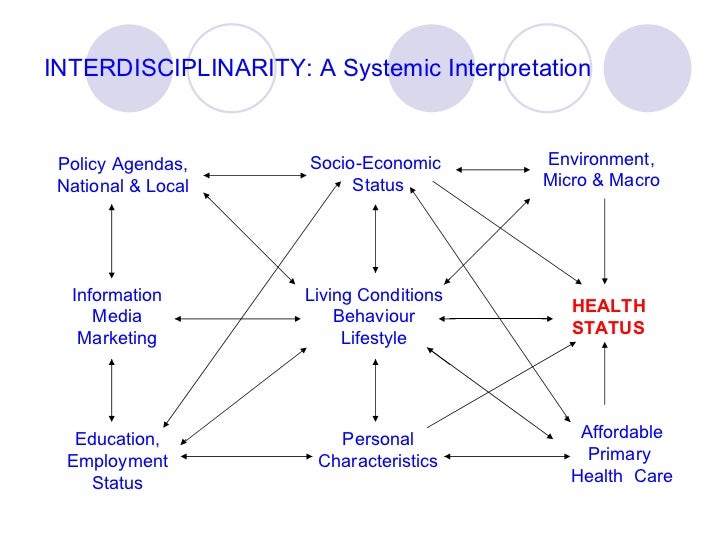Interdisciplinary And Transdisciplinary Approaches: Benefits And Challenges

Table of Contents
Main Points:
2.1. Benefits of Interdisciplinary Approaches:
2.1.1. Enhanced Problem-Solving and Innovation
Interdisciplinary collaboration fosters innovation by bringing together diverse perspectives and expertise. By combining different methodologies and analytical frameworks, researchers and practitioners can gain a more comprehensive understanding of complex problems, leading to more creative and effective solutions. For instance, the development of new cancer treatments often relies on the synergy between biologists, chemists, engineers, and clinicians. Similarly, effective urban planning necessitates the integration of architecture, engineering, sociology, and environmental science.
- Broader understanding of the problem: Diverse viewpoints reveal hidden aspects and potential blind spots.
- Identification of novel solutions: Combining different tools and techniques generates unexpected breakthroughs.
- Improved decision-making: A multidisciplinary team provides a more robust and informed basis for decisions.
2.1.2. Increased Collaboration and Knowledge Sharing
Effective interdisciplinary work relies heavily on strong communication and teamwork. While differences in communication styles and specialized terminology can pose initial challenges, overcoming these obstacles leads to significant benefits. Establishing clear communication protocols, utilizing visual aids, and encouraging active listening are crucial for successful collaboration.
- Improved communication skills: Participants develop the ability to explain complex concepts to diverse audiences.
- Broadened professional networks: Collaboration fosters connections across disciplines, expanding professional opportunities.
- Knowledge transfer between disciplines: Sharing expertise enriches understanding and generates new research avenues.
2.1.3. Improved Research Outcomes
Interdisciplinary research methodologies often yield richer and more impactful results. By combining quantitative and qualitative data analysis, researchers can develop more robust and comprehensive models. This approach enhances the generalizability and applicability of findings, ultimately leading to greater research impact.
- Improved data analysis: Combining different analytical techniques provides a more complete picture.
- More robust methodologies: Integrating different approaches strengthens the validity and reliability of research findings.
- Increased publication potential: High-impact journals often favor interdisciplinary research addressing complex societal challenges.
2.2. Benefits of Transdisciplinary Approaches:
2.2.1. Addressing Complex Real-World Challenges
Transdisciplinary approaches move beyond the integration of disciplinary knowledge to encompass the perspectives and participation of various stakeholders. This holistic approach is particularly valuable in tackling complex, real-world challenges that defy simple, single-discipline solutions. Examples include climate change mitigation strategies that incorporate scientific data with policy recommendations and community engagement, or public health initiatives that engage medical experts, social scientists, and community leaders to address health disparities.
- Holistic nature of solutions: Transdisciplinary projects consider the interconnectedness of various factors.
- Integration of diverse perspectives beyond academia: Including community members and policymakers ensures relevance and applicability.
- Greater impact on society: Solutions are more likely to be adopted and implemented when stakeholders are involved from the outset.
2.2.2. Fostering Stakeholder Engagement
Transdisciplinary research emphasizes active participation of stakeholders throughout the research process. This participatory approach enhances the relevance and applicability of research outcomes, leading to solutions that are more likely to be adopted and implemented. Furthermore, it fosters trust and ownership among stakeholders, leading to more equitable and sustainable outcomes.
- Improved community involvement: Stakeholders are not merely recipients of research findings but active participants.
- More equitable outcomes: Solutions are designed to address the specific needs and concerns of the community.
- Greater trust and acceptance of solutions: Collaboration increases acceptance and facilitates implementation.
2.3. Challenges of Interdisciplinary and Transdisciplinary Approaches:
2.3.1. Communication and Collaboration Barriers
Differing terminologies, methodologies, and research cultures can create significant communication barriers. Strong leadership, clear communication strategies, and a willingness to learn from one another are crucial for overcoming these challenges. Establishing common goals, regular communication channels, and shared understanding of project objectives can facilitate smoother collaboration.
- Jargon and specialized terminology: Clear definitions and plain language are essential.
- Differing perspectives on research methodologies: Compromise and flexibility are vital.
- Conflicting priorities: Collaborative projects require careful negotiation and consensus building.
2.3.2. Power Dynamics and Institutional Barriers
Power imbalances between disciplines, departments, or stakeholders can hinder collaborative efforts. Rigid departmental structures, funding limitations, and a lack of interdisciplinary training programs represent further institutional barriers. Addressing these challenges requires a commitment to equitable collaborations, flexible funding mechanisms, and supportive institutional policies that encourage interdisciplinary work.
- Unequal representation: Ensuring diverse voices are heard and valued is crucial.
- Funding limitations: Securing funding for interdisciplinary projects often requires creative grant writing strategies.
- Rigid departmental structures: Breaking down silos requires institutional changes and supportive leadership.
2.3.3. Challenges in Defining Scope and Measuring Success
Defining project scope and measuring success can be more challenging in interdisciplinary and transdisciplinary projects compared to traditional, single-discipline research. The complexity and multifaceted nature of these projects require flexible evaluation frameworks that incorporate both qualitative and quantitative data. Adaptive management approaches, iterative evaluation, and mixed-methods assessments can be valuable tools for evaluating success in these complex endeavors.
- Difficulty in defining clear goals and measurable outcomes: Employing clear indicators and benchmarks is essential.
- Challenges in integrating qualitative and quantitative data: Mixed-methods approaches are necessary.
- The need for flexible evaluation criteria: Rigid metrics may not be appropriate for all interdisciplinary and transdisciplinary projects.
Conclusion: Embracing the Potential of Interdisciplinary and Transdisciplinary Approaches
In summary, interdisciplinary and transdisciplinary approaches offer tremendous potential for addressing the complex challenges facing our world. While communication barriers, power dynamics, and institutional constraints pose significant challenges, the benefits of enhanced problem-solving, increased collaboration, and greater societal impact are undeniable. By addressing these challenges through improved communication strategies, strong leadership, and flexible assessment frameworks, we can unlock the full potential of these integrated approaches. We encourage you to adopt an interdisciplinary approach in your own work, consider transdisciplinary strategies for complex projects, and explore the benefits of integrated research methods to create a more sustainable and equitable future. To further explore these topics, we recommend consulting resources like the National Science Foundation's initiatives on interdisciplinary research and publications from leading journals in the field of transdisciplinary studies.

Featured Posts
-
 New Photos Jennifer Lawrence And Cooke Maroneys Public Appearance Following Baby No 2 News
May 19, 2025
New Photos Jennifer Lawrence And Cooke Maroneys Public Appearance Following Baby No 2 News
May 19, 2025 -
 Orlando Bloom And The Cold Plunge Fitness Friday Inspiration
May 19, 2025
Orlando Bloom And The Cold Plunge Fitness Friday Inspiration
May 19, 2025 -
 Controverse Region Retire 19 Millions De Financement D Universite De Gauche
May 19, 2025
Controverse Region Retire 19 Millions De Financement D Universite De Gauche
May 19, 2025 -
 Nieoczekiwany Wystep Justyny Steczkowskiej Taniec W Reczniku
May 19, 2025
Nieoczekiwany Wystep Justyny Steczkowskiej Taniec W Reczniku
May 19, 2025 -
 Ufc Vegas 106 Morales Knockout Victory Over Burns Crowns A New Challenger
May 19, 2025
Ufc Vegas 106 Morales Knockout Victory Over Burns Crowns A New Challenger
May 19, 2025
